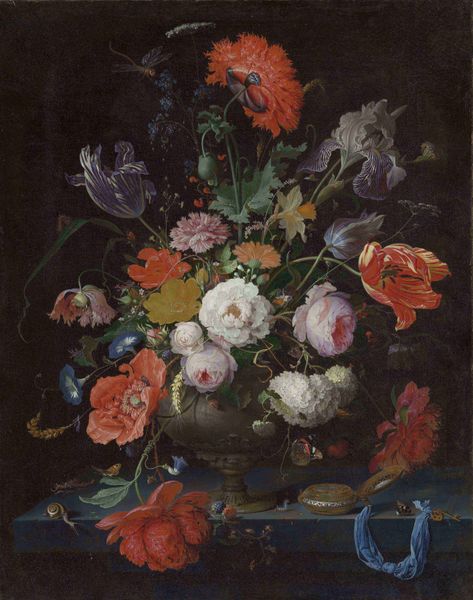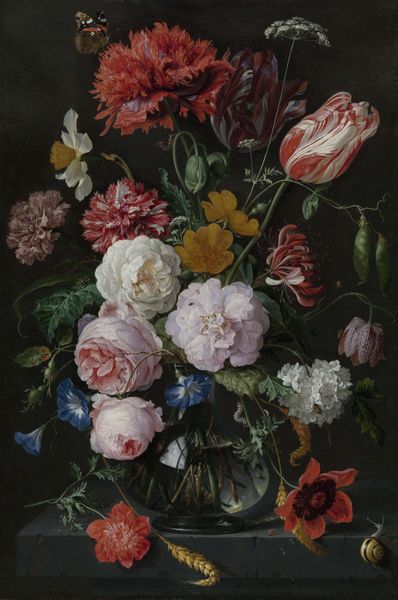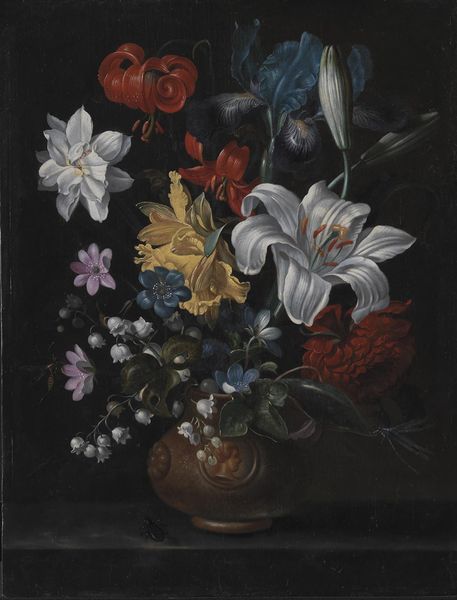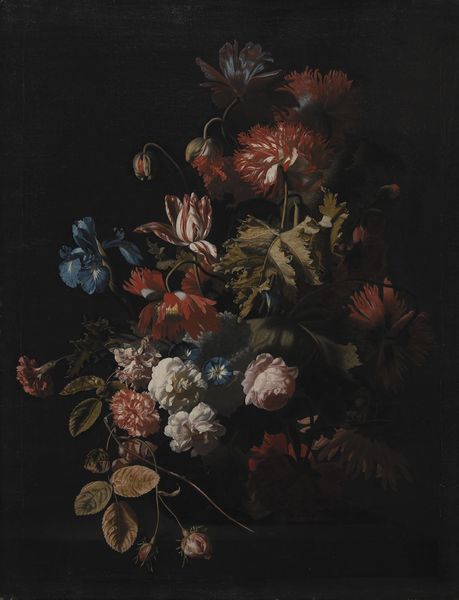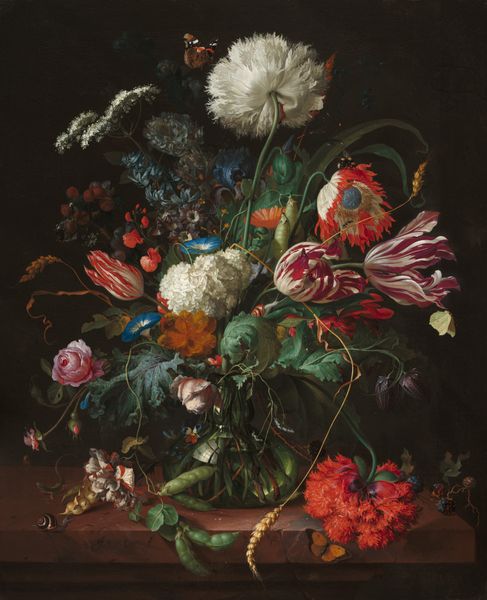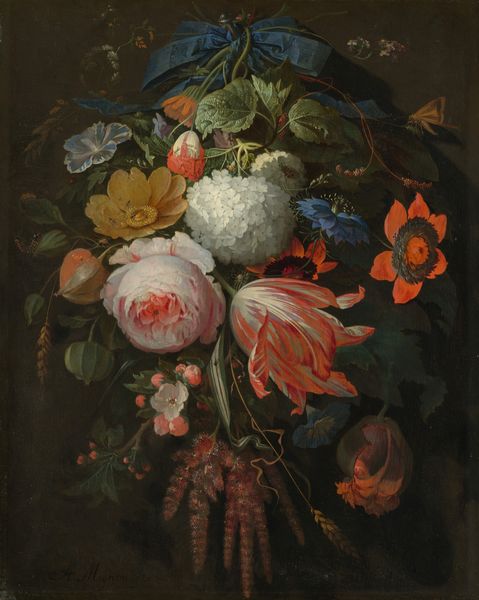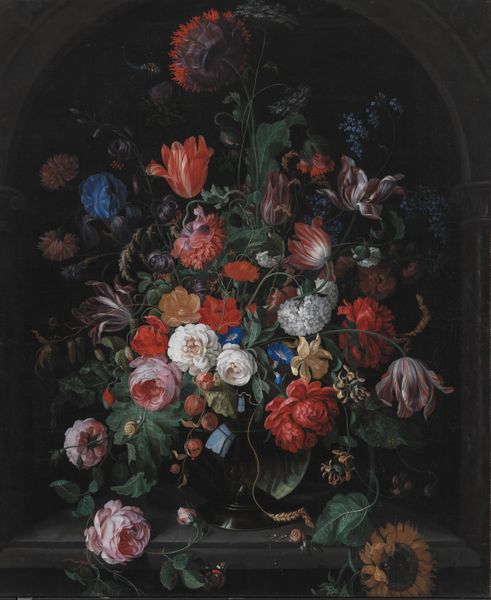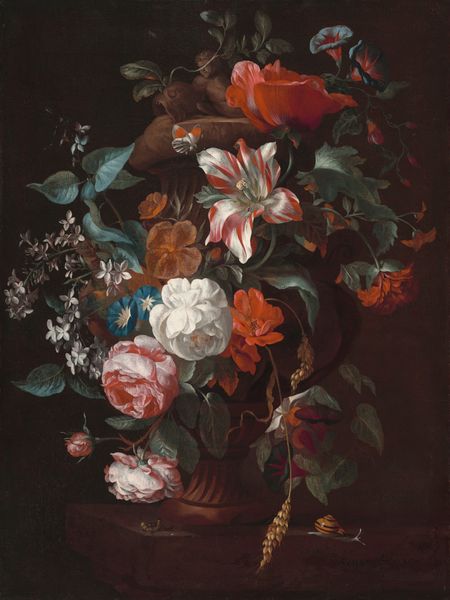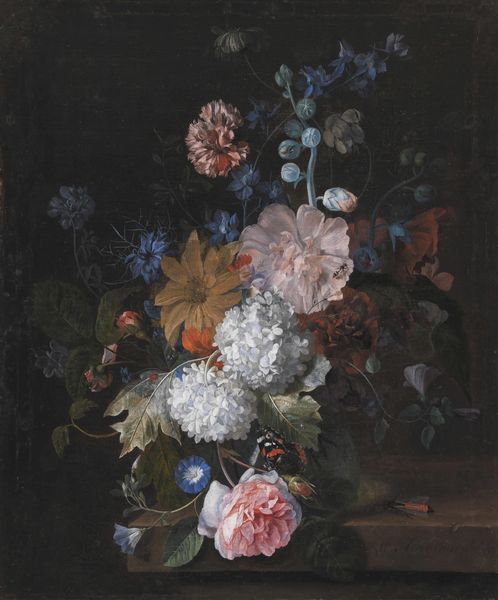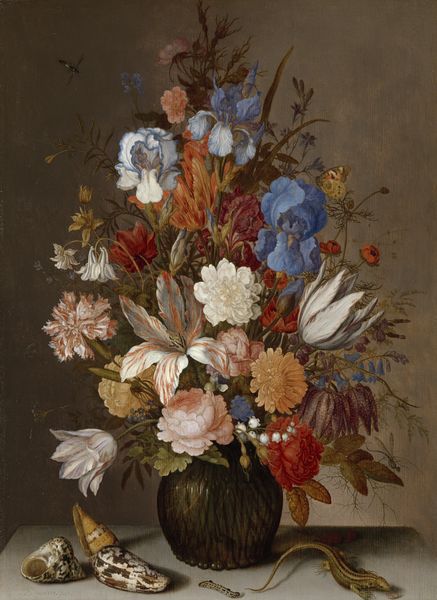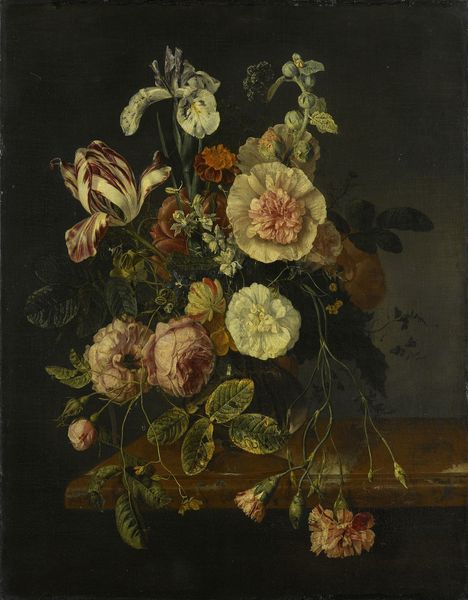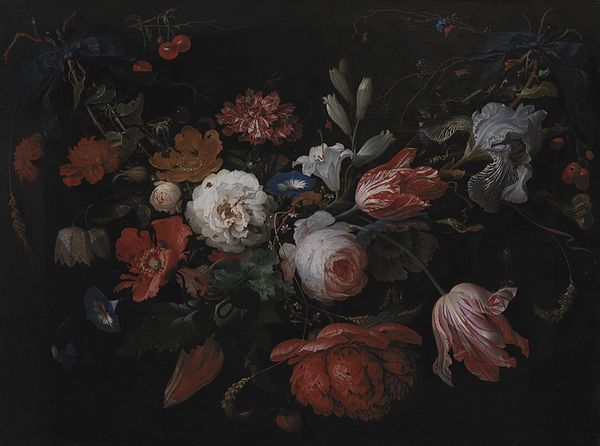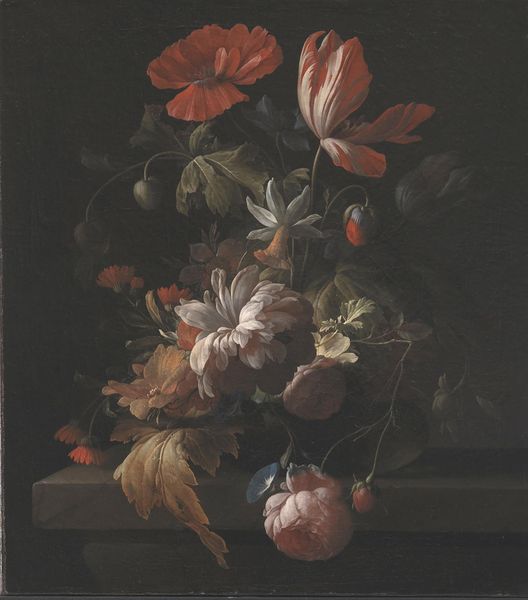
oil-paint
#
baroque
#
dutch-golden-age
#
oil-paint
#
landscape
#
oil painting
Dimensions: 78.5 cm (height) x 66 cm (width) (Netto), 92.9 cm (height) x 80 cm (width) x 5.7 cm (depth) (Brutto)
Curator: "A Bunch of Flowers," an oil painting likely from between 1659 and 1727, is currently housed here at the SMK. The artist attributed to this canvas is Jacob van Walscapelle. My first reaction to this work is its striking, almost overwhelming, beauty. What’s your take? Editor: Initially, I'm struck by the thickness of the oil paint. You can almost feel the layers Van Walscapelle used to create the textures of the petals and leaves. This feels like an investigation into materiality as much as botanical representation. Curator: True. Dutch Golden Age still life paintings served many functions beyond mere aesthetics. They reflect the period's opulence, trade networks, and scientific interest in botany. We see an assertion of wealth and perhaps subtle allusions to mortality through the wilting blooms, a reminder of life's transience for the wealthy patrons who acquired such works. Editor: Yes, and that richness in texture and detail had an economic context as well. The accessibility of pigment determined color choices, and the labor involved speaks volumes. Consider the meticulous detail—someone had to prepare and grind the pigments to reach such density, not to mention cultivating the flowers and producing the glasswork in view. Curator: Absolutely. And it's crucial to view it within the art market that flourished during the Dutch Golden Age. Such paintings held social significance; they acted almost as status symbols displayed in the homes of merchants and other prominent figures, a symbol of participation in a burgeoning cultural milieu. Editor: These flower paintings really illustrate production and consumption so literally. I wonder, did Walscapelle have to outsource labor for components like the vase or even the stretching of the canvas, dividing art making between specialized workers. Curator: That's very possible. Collaboration was common, which complicates this seemingly singular act of creation. What about the insects scattered across the canvas, seemingly caught forever in the artifice of the painting? Editor: Exactly—the painting as a preserved moment but of something already decaying! A gorgeous arrangement created from glass and the application of ground minerals to canvas in order to remind viewers of nature’s rapid lifecycle. We are capturing material transformation here—art mirroring existence and consumption mirroring material production. It truly makes one reflect. Curator: Indeed. "A Bunch of Flowers" gives us insights into the historical currents swirling around artistic production and appreciation. Editor: It is truly revealing to see these beautiful and intricate processes captured through layers and layers of skill and materiality.
Comments
No comments
Be the first to comment and join the conversation on the ultimate creative platform.
